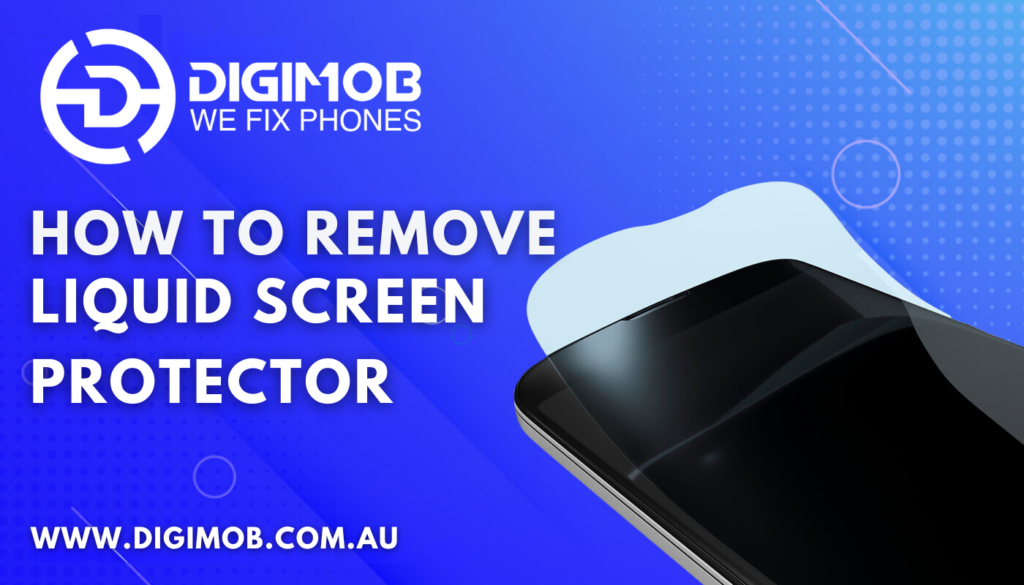Introduction: liquid screen protectors offer a convenient and effective way to safeguard your devices from scratches, smudges, and other damage. However, despite their protective qualities, liquid screen protectors themselves can sometimes become scratched, diminishing the clarity of your device’s screen. If you’ve noticed scratches on your liquid screen protector, don’t worry—there are several methods you can try to restore its appearance and functionality. In this guide, we’ll explore different techniques for fixing scratches on a liquid screen protector, helping you maintain a clear and pristine screen for your device.

Understanding Liquid Screen Protectors:
Before delving into the solutions, let’s briefly discuss what liquid screen protectors are and how they work. Unlike traditional tempered glass or plastic screen protectors, liquid screen protectors are composed of a silicone-based liquid solution that is applied directly to the device’s screen. Once applied, the liquid forms a protective layer that bonds with the screen’s surface, offering resistance against scratches, smudges, and fingerprints. While liquid screen protectors provide excellent protection, they are not completely immune to scratches and may require occasional maintenance to keep them looking their best.
Common Causes of Scratches on Liquid Screen Protectors:
- Abrasive Materials: Contact with abrasive materials such as sand, dirt, or rough surfaces can cause scratches on the liquid screen protector.
- Hard Objects: Accidental contact with hard objects like keys, coins, or sharp utensils can leave visible scratches on the screen protector.
- Incorrect Application: Improper application of the liquid screen protector, including air bubbles or uneven coating, may create areas prone to scratching.
- Wear and Tear: Over time, normal wear and tear from daily use can result in minor scratches and imperfections on the screen protector’s surface.
Now, let’s explore some effective methods for fixing scratches on a liquid screen protector:
- Microfiber Cloth and Cleaning Solution:
- Start by cleaning the surface of the liquid screen protector using a microfiber cloth and a gentle cleaning solution.
- Gently wipe the scratched area in circular motions, applying light pressure to remove any dirt or debris that may be accentuating the scratches.
- Avoid using abrasive materials or harsh chemicals that could further damage the screen protector.
- After cleaning, inspect the scratched area to assess the severity of the scratches. Minor scratches may become less noticeable after cleaning.
- Liquid Screen Protector Repair Kit:
- Purchase a liquid screen protector repair kit designed specifically for addressing scratches and imperfections.
- Follow the instructions provided with the kit to apply the repair solution to the scratched area of the screen protector.
- Typically, these repair kits contain a specialized liquid solution that fills in minor scratches and restores the clarity of the screen protector.
- Allow the repair solution to dry completely according to the manufacturer’s recommendations before using the device.
- Toothpaste or Baking Soda Paste:
- Create a paste using a small amount of toothpaste or baking soda mixed with water.
- Apply the paste to the scratched area of the liquid screen protector using a soft cloth or cotton swab.
- Gently rub the paste into the scratches using circular motions, taking care not to apply too much pressure.
- After buffing the scratched area, wipe away any excess paste with a clean, damp cloth.
- Inspect the screen protector to determine if the scratches have been reduced or removed. Repeat the process if necessary.
- Heat Treatment:
- Use a hairdryer or heat gun to gently warm the surface of the liquid screen protector.
- Apply heat evenly to the scratched area for a few seconds, taking care not to overheat the screen protector.
- The heat helps to soften the protective layer of the screen protector, allowing minor scratches to self-heal or become less visible.
- After heating, allow the screen protector to cool naturally before checking the results.
- Professional Repair Services:
- If the scratches on your liquid screen protector are severe or cannot be effectively repaired using DIY methods, consider seeking professional repair services.
- Some electronic repair shops specialize in fixing scratches and damage to screens, including liquid screen protectors.
- Contact reputable repair shops in your area to inquire about their services and pricing for screen protector repair.

Revive your phone’s vitality with our expert mobile repair services! 📱✨ Visit our website www.digimob.com.au to learn more and schedule your appointment today!
Conclusion:
A scratched liquid screen protector can detract from the overall appearance and usability of your device’s screen. However, with the right techniques and tools, you can often restore the clarity and functionality of the screen protector. Whether you opt for gentle cleaning methods, specialized repair kits, DIY solutions, or professional repair services, taking action to address scratches promptly can help prolong the life of your liquid screen protector and maintain optimal screen clarity. By following the tips outlined in this guide, you can effectively fix scratches on your liquid screen protector and enjoy a clear, pristine screen once again.
Frequently Asked Questions (FAQs)
- Can scratches on a liquid screen protector be completely removed?
- While minor scratches can often be mitigated or made less noticeable using various techniques such as cleaning, repair kits, or DIY solutions, it may not always be possible to completely remove deep or extensive scratches. However, these methods can significantly improve the appearance and clarity of the screen protector.
- Does applying a liquid screen protector increase the durability of the device’s screen?
- Yes, liquid screen protectors can add an additional layer of protection to the device’s screen, making it more resistant to scratches, smudges, and fingerprints. However, they may not offer the same level of impact resistance as tempered glass screen protectors.
- How long does it take for the repair solution from a liquid screen protector repair kit to dry?
- The drying time for the repair solution can vary depending on the specific product and manufacturer’s instructions. Typically, it may take anywhere from a few minutes to several hours for the repair solution to dry completely. It’s essential to follow the recommended drying time to ensure optimal results.
- Can toothpaste or baking soda harm the liquid screen protector?
- Toothpaste or baking soda mixed with water can be used as a mild abrasive to buff out minor scratches on a liquid screen protector. However, excessive pressure or abrasive materials could potentially damage the screen protector’s surface. It’s crucial to use these DIY methods with caution and test them on a small, inconspicuous area first.
- Are professional repair services for liquid screen protectors expensive?
- The cost of professional repair services for liquid screen protectors can vary depending on factors such as the extent of the damage, the repair shop’s location, and their pricing policies. While some repairs may be relatively affordable, more extensive damage may incur higher costs. It’s advisable to obtain quotes from multiple repair shops and compare their services before making a decision.


